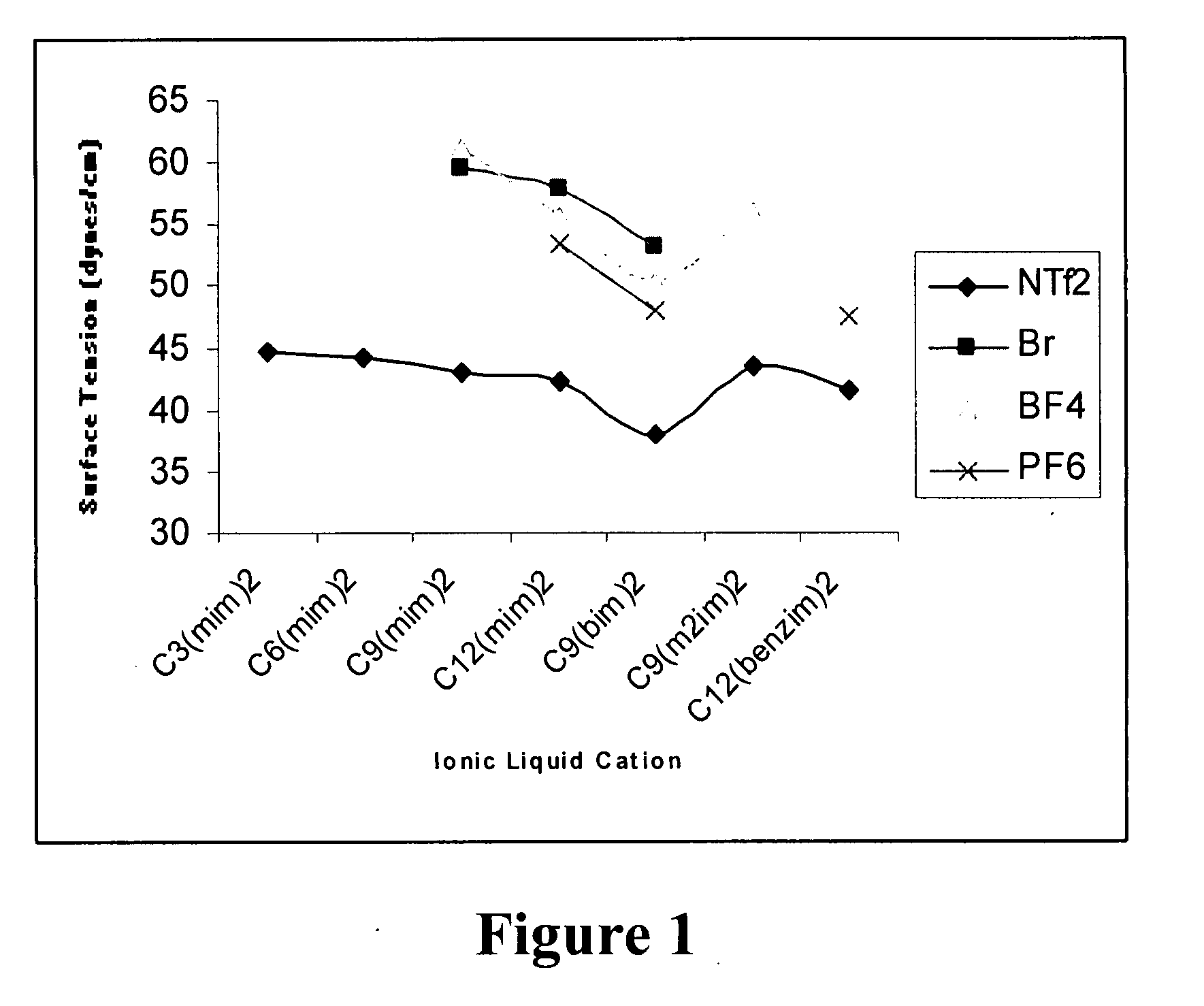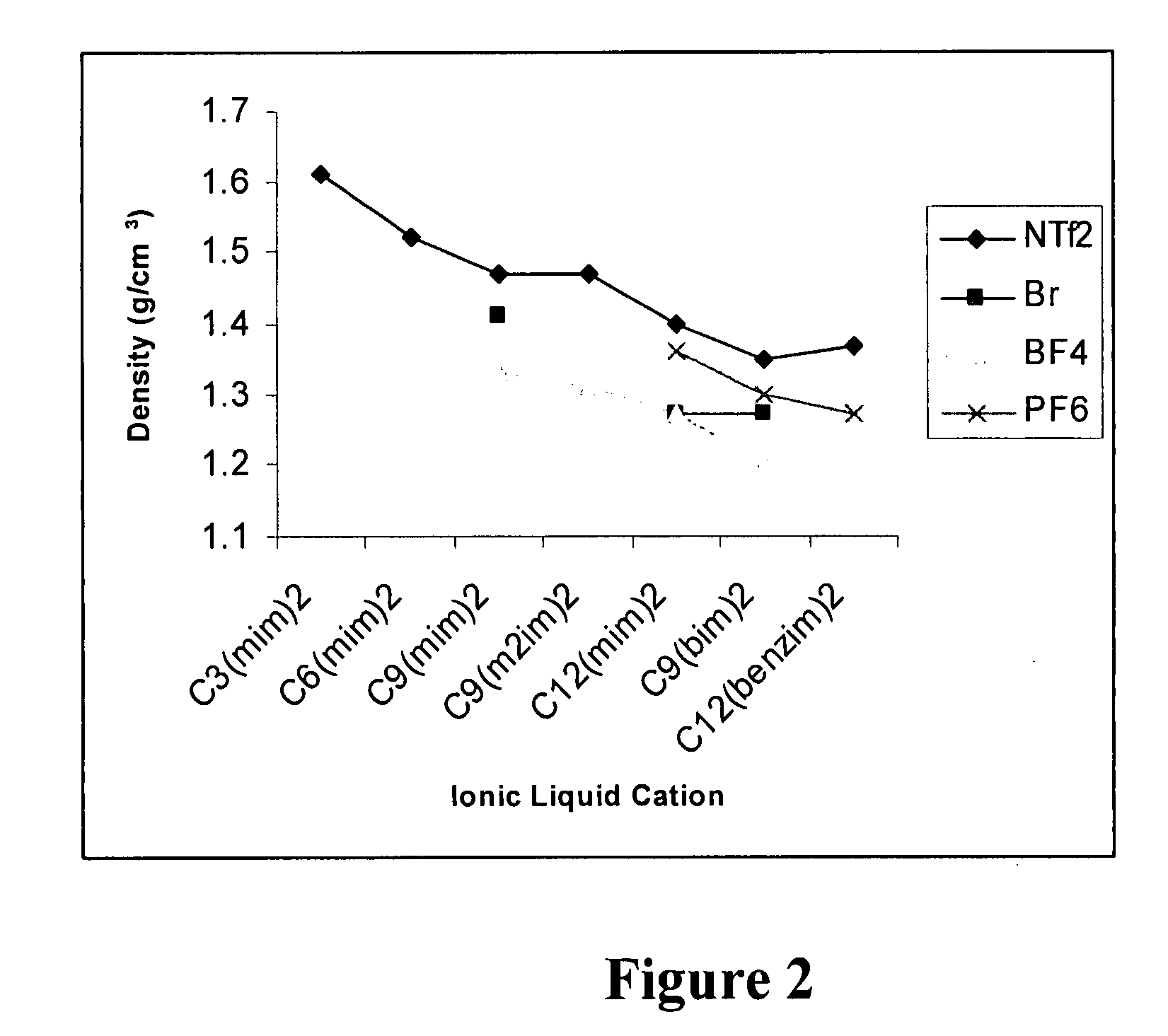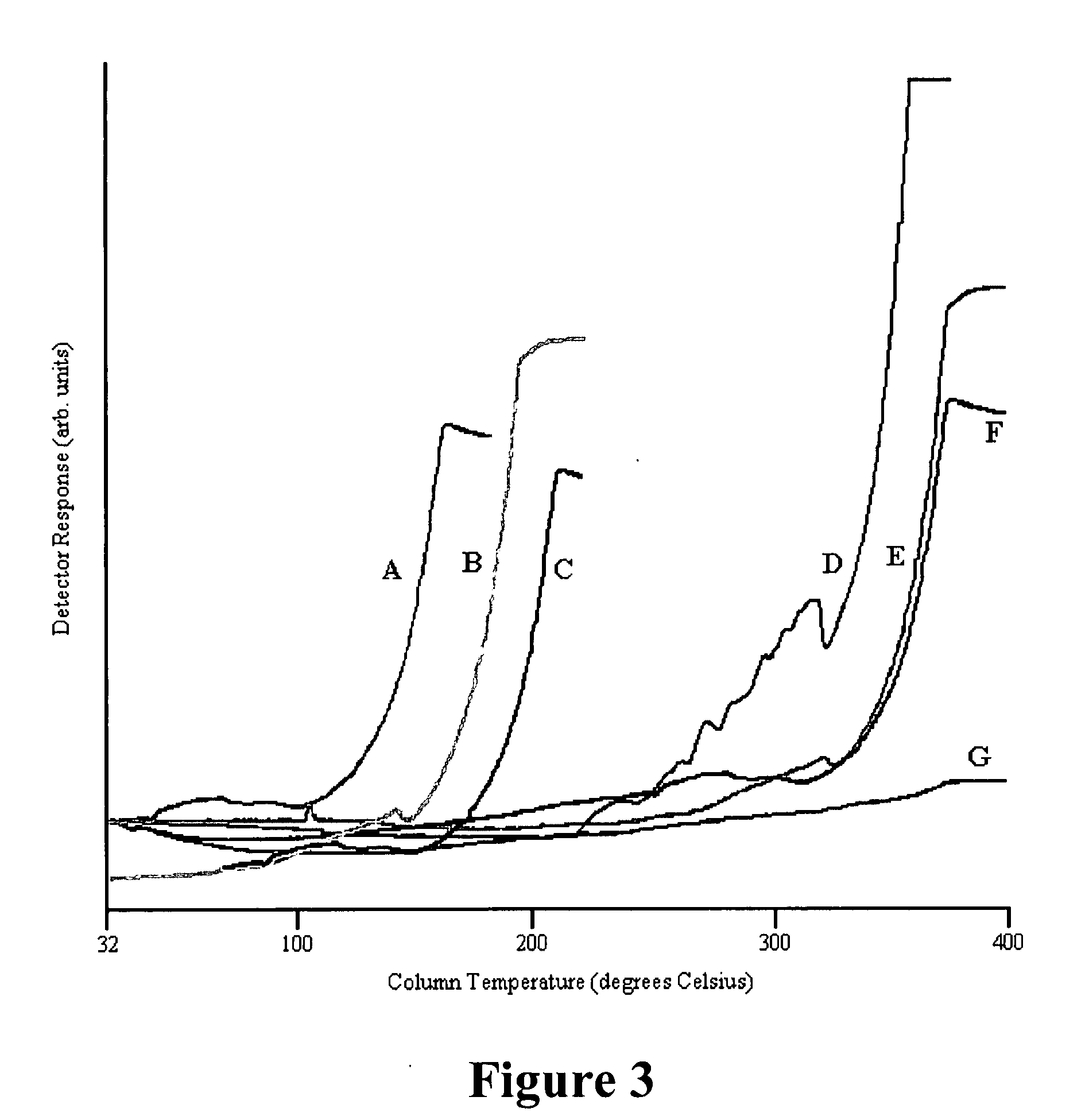High stability diionic liquid salts
- Summary
- Abstract
- Description
- Claims
- Application Information
AI Technical Summary
Benefits of technology
Problems solved by technology
Method used
Image
Examples
example 1
Compound #2
[0188] Synthesis of 2 involved adding 15.0 mL (0.148 mol) of 1,3-dibromopropane dropwise to 23.5 mL (0.295 mol) of 1-methylimidazole in a round bottom flask under constant stirring at room temperature. The reaction was complete within 2 hours. The bromide salt was dissolved in 100 mL water and extracted with three 25 mL aliquots of ethyl acetate. Water was removed under vacuum heating and the remaining salt was dried under a P2O5 vacuum. Synthesis of the NTf2− salt consisted of dissolving 10 grams (0.03 mol) of the bromide salt in 100-150 mL water. Two molar equivalents (0.06 mol, 3.92 grams) of N-lithiotrifluoromethylsulfonimide were dissolved in 50 mL of water in a separate beaker and added directly to the bromide salt. The solution was allowed to stir for 12 hours. The top water layer was removed to leave the ionic liquid. Three additional 30 mL aliquots of water were added and extracted with the ionic liquid until the ionic liquid passed the silver nitrate test. The ...
example 2
Compound #7
[0189] Synthesis of 7 involved adding 15.0 mL (0.098 mol) of 1,6-dibromohexane dropwise to 15.6 mL (0.196 mol) of 1-methylimidazole in a round bottom flask under constant stirring at room temperature. The reaction was complete within 2 hours. The bromide salt was dissolved in 100 mL water and extracted with three 25 mL aliquots of ethyl acetate. Water was removed under vacuum heating and the remaining salt was dried under a P2O5 vacuum. Anions were exchanged by dissolving 10 grams (0.024 mol) of the bromide salt in 150 mL acetone. Two molar equivalents of sodium tetrafluoroborate (0.049 mol, 5.38 grams) were then directly added to the acetone mixture. After allowing 24 hours for complete mixing, sodium bromide was filtered off to leave the pure ionic liquid. The sample was then subjected to silver nitrate to ensure no silver bromide precipitate was present. Acetone was removed under vacuum and the remaining ionic liquid dried under a P2O5 vacuum.
example 3
Compound #17
[0190] Synthesis of 17 involved adding 15.0 mL (0.074 mol) of 1,9-dibromononane dropwise to 19.4 mL (0.148 mol) of 1-butylimidazole in a round bottom flask under constant stirring at room temperature. The reaction was complete after 5 hours. The resulting viscous liquid was dissolved in 100 mL water and extracted with three 35 mL aliquots of ethyl acetate. Water was removed under vacuum heating and the remaining salt was dried under a P2O5 vacuum.
PUM
| Property | Measurement | Unit |
|---|---|---|
| Temperature | aaaaa | aaaaa |
| Fraction | aaaaa | aaaaa |
| Time | aaaaa | aaaaa |
Abstract
Description
Claims
Application Information
 Login to View More
Login to View More - R&D
- Intellectual Property
- Life Sciences
- Materials
- Tech Scout
- Unparalleled Data Quality
- Higher Quality Content
- 60% Fewer Hallucinations
Browse by: Latest US Patents, China's latest patents, Technical Efficacy Thesaurus, Application Domain, Technology Topic, Popular Technical Reports.
© 2025 PatSnap. All rights reserved.Legal|Privacy policy|Modern Slavery Act Transparency Statement|Sitemap|About US| Contact US: help@patsnap.com



